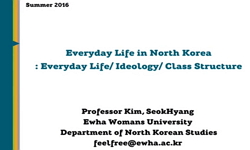We conducted a consensual, expansive, and successive study to compare cultural differences and similarities between Korean, Chinese and Japanese’s Seasonal Festivals and Foods documentarily. It showed interesting results that the three countries had...
http://chineseinput.net/에서 pinyin(병음)방식으로 중국어를 변환할 수 있습니다.
변환된 중국어를 복사하여 사용하시면 됩니다.
- 中文 을 입력하시려면 zhongwen을 입력하시고 space를누르시면됩니다.
- 北京 을 입력하시려면 beijing을 입력하시고 space를 누르시면 됩니다.
https://www.riss.kr/link?id=A76352741
- 저자
- 발행기관
- 학술지명
- 권호사항
-
발행연도
2008
-
작성언어
Korean
-
주제어
Seasonal festival ; seasonal foods ; Korea ; China ; Japan
-
KDC
594
-
등재정보
KCI등재
-
자료형태
학술저널
-
수록면
277-293(17쪽)
-
KCI 피인용횟수
8
- 제공처
- 소장기관
-
0
상세조회 -
0
다운로드
부가정보
다국어 초록 (Multilingual Abstract)
We conducted a consensual, expansive, and successive study to compare cultural differences and similarities between Korean, Chinese and Japanese’s Seasonal Festivals and Foods documentarily. It showed interesting results that the three countries had celebrated with similar meanings, and shared similar events and special foods. Seasonal Festivals happen throughout the year sequentially: the New Year Day, January 15<SUP>th</SUP>(first full moon festival), March 3rd(double three day), May 5<SUP>th</SUP>(double five day), July 7<SUP>th</SUP>(double seven day) and finally the Year Farewell Festival. While, the festival of a royal birthday of Buddha happens on April 8<SUP>th</SUP> in both countries: Korea and Japan. There is also one of the big festivals called the harvest moon festival on August 15<SUP>th</SUP>, and this event celebrates with special foods both in Korea and China. On December 23<SUP>th</SUP>, it is a special day for both Chinese and Japanese, but they celebrate the day with different meanings to it. Three countries have a special seasonal event celebrated each other. Koreans have a special event called Sambok to overcome summer with special food during a middle of June to the beginning of July. Chinese have a special event for overcoming winter with soup on December 8<SUP>th</SUP>. Japanese have a special event with rice cake to safety on January 11<SUP>th</SUP>. On these seasonal festivals, it is different to note that two different kinds of calendars are used. The lunar calendar is used by Koreans and Chinese whereas the solar calendar is used by Japanese. Because of the similarity in Buddhism, and agricultural industry, and especially sharing Chinese Characters in words, these three countries have in common in many ways to celebrate Seasonal Festival, and it is very unique custom in the world. Nowadays; however, these traditional events and special foods are changing in more simplified version and almost disappearing in all three countries. Therefore, we suggest that the Seasonal Festivals and Foods should be more emphasized in flourishing and exchanging between Korea, China and Japan.
참고문헌 (Reference)
1 윤서석, "한국의 전래생활" 수학사 116-117, 1983
2 윤서석, "한국의 음식용어" 민음사 66-, 1991
3 김상보, "한국의 음식생활문화사" 광문각 441-448, 1997
4 장주근, "한국의 세시풍속" 형설출판사 15-, 1984
5 이효지, "한국음식의 맛과 멋" 신광출판사 55-67, 2005
6 윤서석, "한국요리" 수학사 102-111, 1980
7 이성우, "한국식품사회사" 교문사 299-320, 1984
8 이성우, "한국식품문화사" 교문사 265-, 1984
9 강인희, "한국식생활풍속" 삼영사 158-161, 1984
10 이성우, "한국식생활의 역사" 수학사 136-, 1993
1 윤서석, "한국의 전래생활" 수학사 116-117, 1983
2 윤서석, "한국의 음식용어" 민음사 66-, 1991
3 김상보, "한국의 음식생활문화사" 광문각 441-448, 1997
4 장주근, "한국의 세시풍속" 형설출판사 15-, 1984
5 이효지, "한국음식의 맛과 멋" 신광출판사 55-67, 2005
6 윤서석, "한국요리" 수학사 102-111, 1980
7 이성우, "한국식품사회사" 교문사 299-320, 1984
8 이성우, "한국식품문화사" 교문사 265-, 1984
9 강인희, "한국식생활풍속" 삼영사 158-161, 1984
10 이성우, "한국식생활의 역사" 수학사 136-, 1993
11 강인희, "한국식생활사" 삼영사 366-, 1990
12 임동권, "한국세시풍속연구" 집문당 9-, 1985
13 최인학, "한국민속과 동아시아" 민속원 31-39, 2004
14 장명희, "한국과 일본의 歲時風俗과 歲時食의 비교 연구" 세종대학교 1985
15 이두현, "한국 민속학 논고" 학연사 287-, 1984
16 황혜성, "조선왕조 궁중음식" 궁중음식연구원 34-47, 1993
17 장정옥, "식생활문화의 이해" 보문각 73-85, 2005
18 정혜경, "서울의 음식문화" 서울학연구소 48-61, 1996
19 시노다 오사무, "국음식문화사" 민음사 119-, 1995
20 稲垣長典, "食物學用語辭典" 學文社 13-, 1970
21 楅場博保, "食物學 用語辭典" 學文社 13-, 1970
22 장정용, "韓·中 세시풍속 및 가요 연구" 집문당 17-18, 1988
23 宋北麟, "圖說中國傳統節日" 世界圖書出版西安公 2006
24 Cooking Loretla, "四季の行事料理" 小學館 145-, 1984
25 吉田集而, "の食文化 食の文化講座 第一券" 財團法人 味の素食の文化センター 330-331, 1998
26 Jang MH, "Comparative study on Seasonal Custom and Seasonal Food Culture between Korea and Japan" Sejong University 1985
27 Im YS, "A study foods for Korean Festival Days" 1 : 361-370, 1985
28 Yun US, "A Study on the knowledge on the Korean Festival Foods" 11 : 140-144, 1995
동일학술지(권/호) 다른 논문
-
조리 작업과 주방 환경이 조리 종사원의 업무 피로도에 미치는 영향에 관한 연구
- 동아시아식생활학회
- 정혜정(Hea-jung Chung)
- 2008
- KCI등재
-
- 동아시아식생활학회
- 편집부(편집자)
- 2008
- KCI등재
-
음식 선택 동기와 채소 소비의 관계를 조절하는 음식 신공포증의 효과 평가
- 동아시아식생활학회
- 강종헌(Jong-Heon Kang)
- 2008
- KCI등재
-
생감자의 열탕 추출물을 첨가한 감자 김치의 이화학적 특성 및 In Vivo에서의 항암 효과
- 동아시아식생활학회
- 장상근(Sang-Keun Chang)
- 2008
- KCI등재
분석정보
인용정보 인용지수 설명보기
학술지 이력
| 연월일 | 이력구분 | 이력상세 | 등재구분 |
|---|---|---|---|
| 2026 | 평가예정 | 재인증평가 신청대상 (재인증) | |
| 2020-01-01 | 평가 | 등재학술지 유지 (재인증) |  |
| 2017-01-01 | 평가 | 등재학술지 유지 (계속평가) |  |
| 2013-01-01 | 평가 | 등재학술지 유지 (등재유지) |  |
| 2010-01-01 | 평가 | 등재학술지 유지 (등재유지) |  |
| 2008-01-01 | 평가 | 등재학술지 유지 (등재유지) |  |
| 2005-05-19 | 학술지등록 | 한글명 : 동아시아식생활학회지외국어명 : The East Asian Society of Dietary Life |  |
| 2005-01-01 | 평가 | 등재학술지 선정 (등재후보2차) |  |
| 2004-01-01 | 평가 | 등재후보 1차 PASS (등재후보1차) |  |
| 2003-01-01 | 평가 | 등재후보학술지 선정 (신규평가) |  |
학술지 인용정보
| 기준연도 | WOS-KCI 통합IF(2년) | KCIF(2년) | KCIF(3년) |
|---|---|---|---|
| 2016 | 0.86 | 0.86 | 0.89 |
| KCIF(4년) | KCIF(5년) | 중심성지수(3년) | 즉시성지수 |
| 0.87 | 0.92 | 1.473 | 0.15 |




 ScienceON
ScienceON DBpia
DBpia






